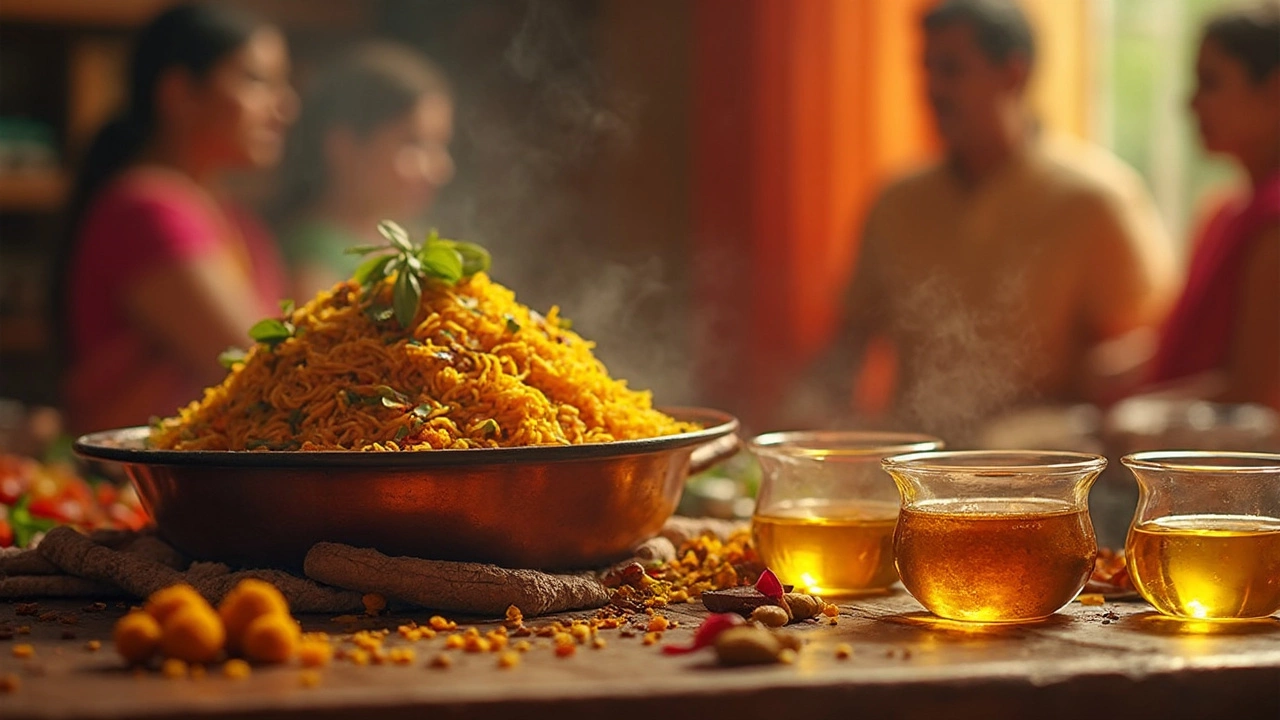Cooking Biryani Made Simple: Tips You Can Use Today
Biryani looks fancy, but you don’t need a chef’s hat to nail it. The biggest roadblock is usually the rice – either mushy or undercooked. Start with a good basmati, rinse it a few times, and soak for 30 minutes. This alone stops the grains from breaking during the final steam.
Why Biryani Can Feel Hard
Most people think biryani is hard because they try to rush the steps. Skipping the soak, using too much water, or layering spices incorrectly can turn a fragrant dish into a bland one. Another surprise is the “black things” you sometimes see – whole spices like black cardamom, cloves, or peppercorns. They’re added for aroma, not for eating whole, so you can leave them out if you’re picky.
Temperature matters, too. When you put the rice and meat together, the pot should be on low heat – the classic “dum” method. High heat burns the bottom layer, while low heat lets the steam circulate, cooking everything evenly.
Simple Steps to Master Biryani
1. Prep the rice: After soaking, drain and parboil with 70% of the water you’d normally use. The grains should be just a bite shy. 2. Season the meat: Marinate chicken, lamb, or veggies with yogurt, ginger‑garlic paste, and a pinch of turmeric. Let it sit for at least 30 minutes – the acid helps tenderize.
3. Build flavor layers: Fry whole spices in ghee until they pop, then add sliced onions, tomatoes, and biryani masala. Cook until the oil separates. This base is where the magic happens.
4. Layer wisely: In a heavy‑bottom pot, spread a layer of meat, then a layer of the par‑boiled rice. Sprinkle fried onions, fresh coriander, mint, and a few drops of rose water or saffron‑milk. Repeat until you run out, ending with rice on top.
5. Seal and steam: Cover the pot with a tight‑fitting lid. You can seal the edges with dough to trap steam. Cook on the lowest flame for 20‑25 minutes. No need to stir – the steam does the work.
6. Rest before serving: Turn off the heat and let the pot sit for 10 minutes. This lets the flavors settle and makes the rice fluffier.
Quick fixes: If the rice is too firm, sprinkle a spoonful of water over the top and give it another 5‑minute steam. If it’s mushy, spread it on a plate to cool for a few minutes, then fluff with a fork.
Finally, taste and adjust salt. Biryani often needs a little more than you think because the spices are strong. A pinch of sugar can balance excessive heat, and a squeeze of lemon lifts the whole dish.
With these steps, you’ll stop wondering why biryani feels hard and start serving plates that smell amazing, look beautiful, and taste just right. Happy cooking!
Which Oil Is Best for Biryani? Find Out What Really Works
Ever wondered which oil is actually best for biryani? This guide compares popular options like ghee, sunflower oil, and mustard oil, weighing their flavor, smoke points, and health factors. Learn how oil choices impact your biryani’s aroma, texture, and taste. Find tips to match the oil to your cooking style and dietary needs. Pick the perfect oil and make every biryani memorable.
